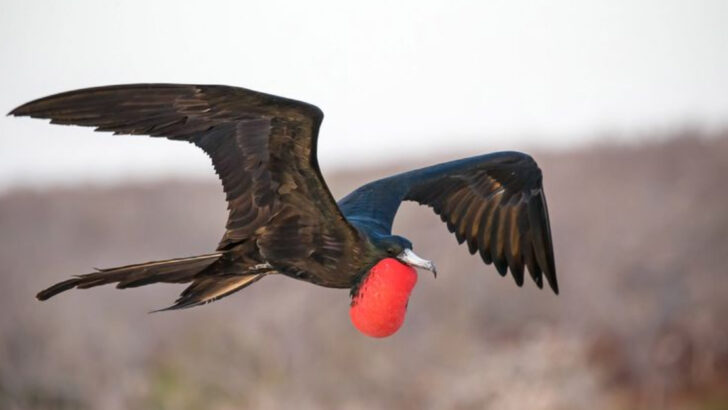Imagine flying for a week without touching ground. No pit stops. No water breaks. Just sky.
The magnificent frigatebird does exactly that—gliding above oceans with a wingspan like a shadow and stamina that makes jet pilots look lazy.
They sleep mid-air. They steal food mid-flight. They ride thermals like surfers chasing the perfect wave. And their giant throat pouch? It’s not just flashy—it’s part of one of the wildest mating displays in the animal kingdom.
These birds aren’t just good at flying. They’re built for the skies in ways that feel almost supernatural.
Let’s meet the high-flying legend that refuses to come down.
Unmatched Aerodynamics
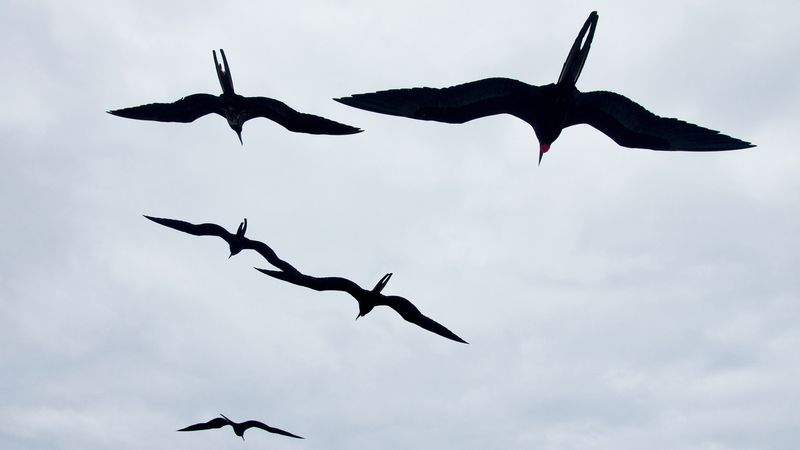
Frigatebirds, with their slender wings and elongated forked tails, are masterpieces of aerodynamic design. These birds can glide effortlessly, covering vast ocean expanses with minimal energy expenditure. Their wings, long and narrow, allow for remarkable lift and maneuverability.
Despite their large wingspan, frigatebirds weigh very little, enhancing their flight efficiency. Their skeletal structure is adapted for life aloft, with a lightweight build that complements their aerial lifestyle.
Did you know? Frigatebirds have the highest ratio of wing area to body mass of any bird, a key to their exceptional flying ability.
Life on the Wing
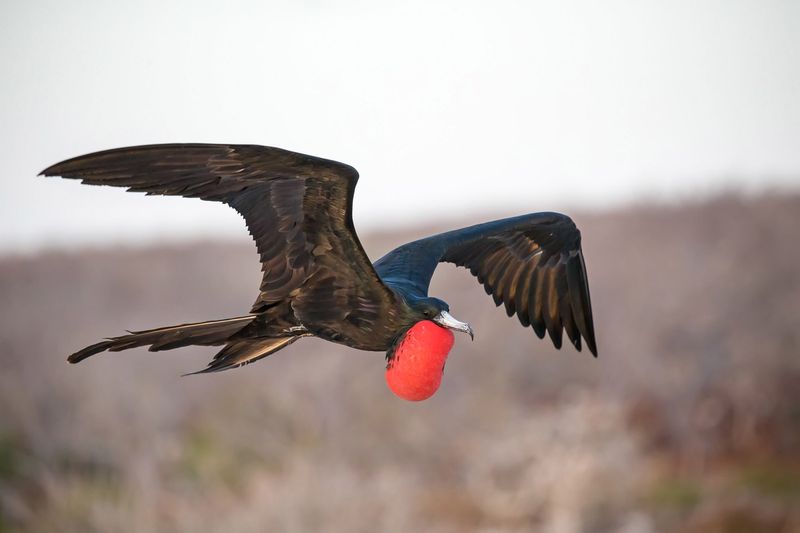
Imagine a life spent mostly in the air, and you have the essence of the frigatebird’s existence. These birds can remain airborne for weeks, rarely touching down. Their ability to skim the ocean’s surface for food without landing is extraordinary.
Frigatebirds possess an exceptional sense of balance, enabling them to snatch prey from the water with precision. Their mastery of flight allows for long migrations across vast distances without fatigue.
A quirky fact: frigatebirds even sleep while flying, resting one hemisphere of their brain at a time—a testament to their aerial adaptation.
Unique Feeding Techniques

With a sharp eye and lightning reflexes, frigatebirds excel at snatching fish right off the water’s surface. They seldom dive but instead deftly skim with their long bills, picking food with unmatched precision.
Their diet relies heavily on flying fish, which they catch mid-flight in an amazing aerial ballet. The frigatebird’s agility in the air enables it to engage in kleptoparasitism, stealing prey from other birds, showcasing their cunning survival tactics.
Interestingly, their name originates from pirates, echoing their notorious reputation for plundering food from fellow seabirds.
Breeding Display
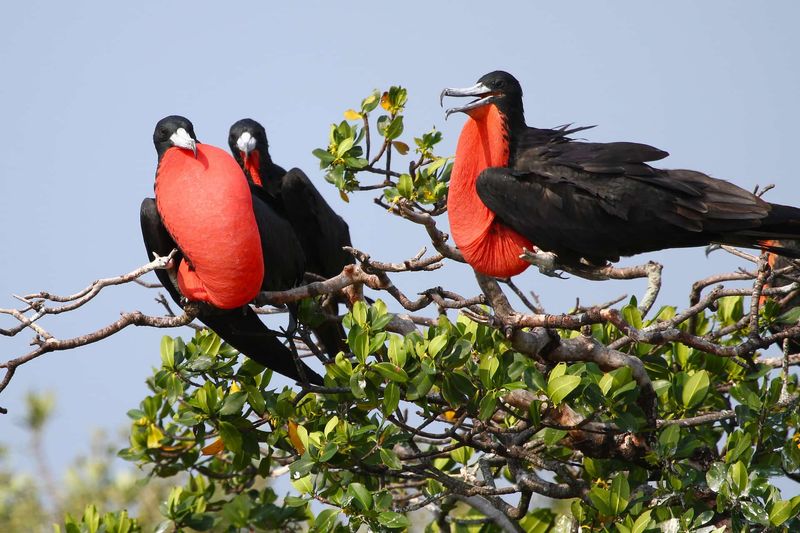
In the realm of courtship, male frigatebirds are nothing short of spectacular. They puff out their bright red throat pouches, creating a striking visual display to attract females. This mating ritual is a vivid scene of nature’s pageantry.
Males produce drumming sounds by vibrating their pouches, adding an auditory element to the visual spectacle. Nesting colonies become arenas of competitive beauty as males vie for attention.
Did you know? The size and vibrancy of a male’s throat pouch can indicate his health and vitality, playing a crucial role in female selection.
Conservation and Habitat
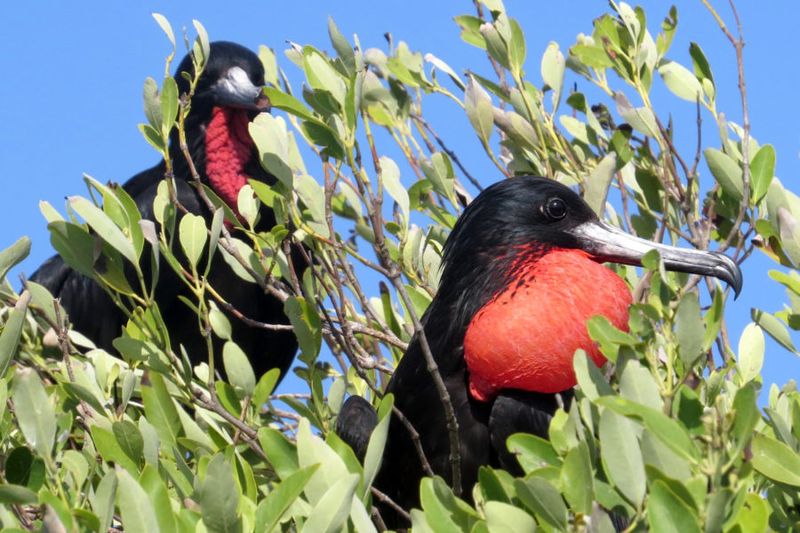
The frigatebird’s future hinges on the conservation of its marine habitat, as these birds rely heavily on ocean health. They inhabit tropical and subtropical regions, often nesting on remote islands where human contact is minimal.
Climate change and pollution pose significant threats to their environment, impacting food availability and breeding grounds. Conservation efforts focus on protecting these vital areas and mitigating human-induced challenges.
The frigatebird serves as an indicator species, reflecting the broader health of marine ecosystems—a reminder of the delicate balance in nature.
Predatory Intelligence
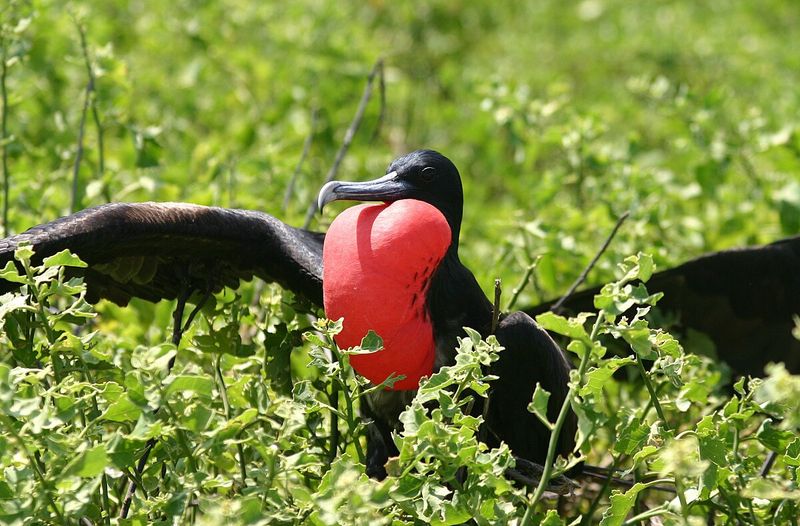
Imagine soaring high above the ocean with a hawk’s precision. The Magnificent Frigatebird isn’t just a passive traveler; it’s a master strategist.
This bird’s intelligence comes to the fore when hunting for food. Instead of diving, it uses its quick wit to snatch prey from the water’s surface.
Did you know? Frigatebirds often target other birds mid-flight, forcing them to drop their catch. It’s a clever trick that showcases their predatory prowess and resourcefulness.
Majestic Appearance
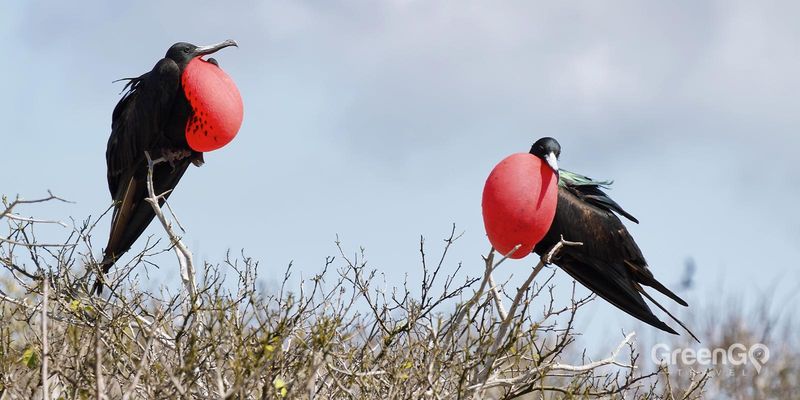
With glossy black feathers and a remarkable red throat pouch, the Magnificent Frigatebird’s presence is unforgettable. This striking appearance isn’t just for show; it plays a crucial role in mating rituals.
The male displays his inflated pouch to attract females, creating a visual spectacle that’s hard to ignore. This vibrant plumage and commanding presence announce their beauty to the world.
Their aesthetic appeal isn’t just skin-deep, as these features are vital for survival and reproduction in the wild.
Long-Distance Gliders
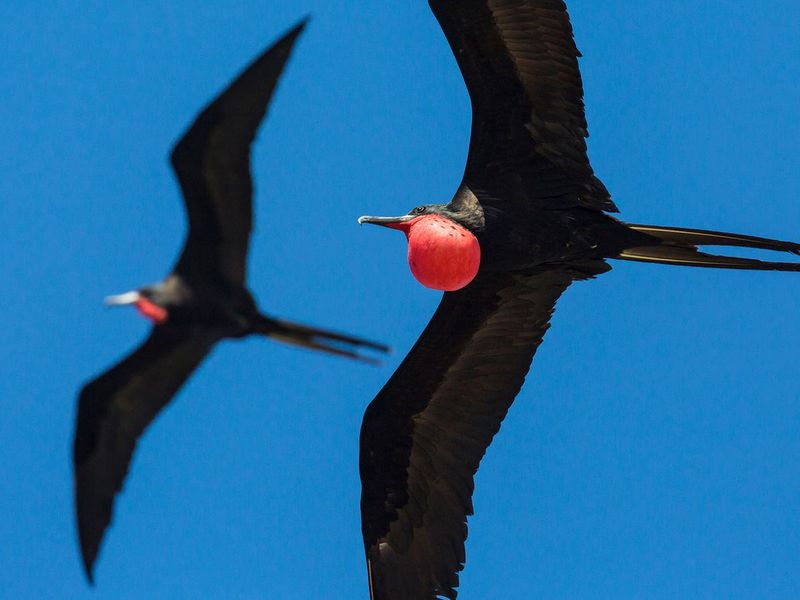
The Magnificent Frigatebird’s wingspan is a marvel of nature, designed for long-distance travel.
These birds can glide effortlessly over the ocean for thousands of miles, barely flapping their wings. This energy-efficient flight is essential for survival, allowing them to cover expansive areas in search of food.
Their ability to remain airborne for such extended periods sets them apart from other birds, showcasing nature’s amazing adaptation skills in action.
Social Dynamics

In the world of the Magnificent Frigatebird, social interactions play a key role. These birds often form large colonies, thriving on companionship and cooperation.
Their social behaviors include mutual grooming, a practice that strengthens bonds and ensures cleanliness.
Such interactions aren’t mere pleasantries but integral to their survival strategy. By working together, they enhance their chances of thriving in challenging environments.
Cultural Significance

Beyond their natural characteristics, Magnificent Frigatebirds hold cultural significance for many coastal communities. These birds appear in folklore and are often considered omens or symbols of freedom.
In some cultures, their appearance signals approaching rain or storms, a testament to their deep connection with the natural world.
Their majestic presence in the sky has inspired art and stories, making them a cherished part of local heritage and tradition.

